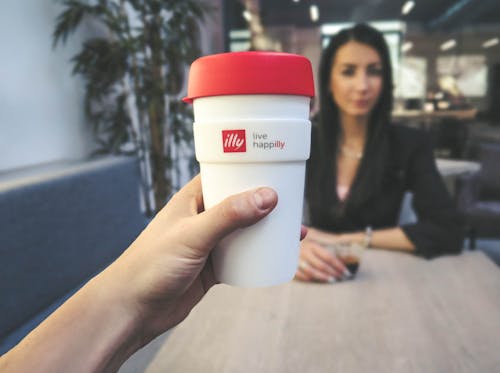
The answer is: no, you should not microwave a thermos. A thermos is usually made of metal or glass, which can cause sparks or damage in the microwave. A thermos also has a vacuum seal that can explode or leak if heated in the microwave. Microwaving a thermos is not safe and not recommended.
A thermos is a type of insulated container that can keep liquids hot or cold for long periods of time. It was invented in 1892 by Sir James Dewar, a Scottish chemist and physicist. He designed a double-walled glass bottle with a vacuum between the walls to prevent heat transfer by conduction or convection. He called his invention a “vacuum flask” or a “Dewar flask”.
Later, in 1904, two German glassblowers named Reinhold Burger and Albert Aschenbrenner patented Dewar’s invention and started mass-producing it under the brand name “Thermos”. The name comes from the Greek word “thermos”, meaning “hot”. The Thermos company soon became popular and expanded its product line to include different sizes, shapes, colors, and materials of vacuum flasks.
Today, a thermos is a generic term for any insulated container that can keep liquids hot or cold. A thermos can be made of metal, glass, plastic, or ceramic. It can have different types of lids, caps, stoppers, or spouts. It can also have different features, such as handles, straps, cups, or spoons.

Microwaving a thermos is not a good idea for several reasons. Here are some of them:
If you want to reheat your drink safely without using a thermos in the microwave, you need to use another container that is microwave-safe instead of a thermos. You can use any container that is made of glass, ceramic, silicone, or BPA-free plastic that has a microwave-safe label or symbol on it.
Here are some tips to reheat your drink safely without using a thermos in the microwave:

Q: Can I microwave a thermos bottle?
A: No, you should not microwave a thermos bottle. A thermos bottle is a type of thermos that has a narrow neck and a cap that can be used as a cup. A thermos bottle can contain metal parts that can cause sparks or damage in the microwave. A thermos bottle can also have a vacuum seal that can explode or leak if heated in the microwave.
Q: Can I microwave a thermos mug?
A: No, you should not microwave a thermos mug. A thermos mug is a type of thermos that has a handle and a lid that can be opened or closed with a button or a slider. A thermos mug can contain metal parts that can cause sparks or damage in the microwave. A thermos mug can also have a vacuum seal that can explode or leak if heated in the microwave.
Q: Can I microwave a thermos food jar?
A: No, you should not microwave a thermos food jar. A thermos food jar is a type of thermos that has a wide mouth and a lid that can be used as a bowl or a spoon holder. A thermos food jar can contain metal parts that can cause sparks or damage in the microwave. A thermos food jar can also have a vacuum seal that can explode or leak if heated in the microwave.
Q: Can I microwave soup in a thermos?
A: No, you should not microwave soup in a thermos. Soup is a liquid that can easily scorch, boil over, or form a skin on top if not heated properly in the microwave. Soup can also contain metal parts such as bones, cans, or spoons that can cause sparks or damage in the microwave. Soup can also have a vacuum seal that can explode or leak if heated in the microwave.
Q: Can I microwave coffee in a thermos?
A: No, you should not microwave coffee in a thermos. Coffee is a liquid that can easily scorch, boil over, or form a skin on top if not heated properly in the microwave. Coffee can also contain metal parts such as filters, pods, or stirrers that can cause sparks or damage in the microwave. Coffee can also have a vacuum seal that can explode or leak if heated in the microwave.
Microwaving a thermos is not safe and not recommended. A thermos is usually made of metal or glass, which can cause sparks or damage in the microwave. A thermos also has a vacuum seal that can explode or leak if heated in the microwave.
If you want to reheat your drink safely without using a thermos in the microwave, you need to use another container that is microwave-safe instead of a thermos. You need to transfer your drink from the thermos to the container carefully and avoid spilling it. You need to cover the container loosely and allow some steam to escape. You need to microwave your drink in short intervals and stir it frequently to ensure even heating and avoid overheating or burning it. You need to check the temperature of your drink before drinking it and be careful not to burn yourself or your mouth.
We hope that this article has helped you learn why you should not microwave a thermos and how to reheat your drink safely without using a thermos in the microwave. If you have any questions or comments, feel free to leave them below. We would love to hear from you!
Thank you for reading and happy drinking!
